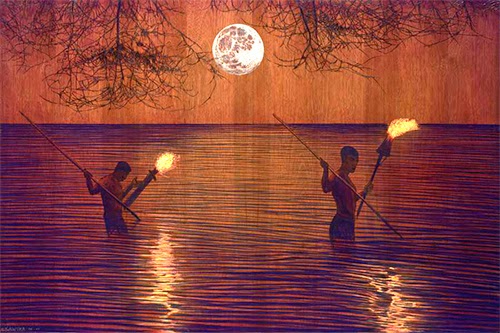PENDEHO
A "false friend" is a word found in two languages, but do not mean the same thing. You think you can use the word with your own meaning (a "friend"), but in another country it has a different meaning ("false friend").
Even though we borrowed our Chamorro word pendeho from the Spanish, it means one thing in Chamorro, and another thing (or things, actually) in Spanish.
For us, pendeho just means "a rascal," "rogue" or "a mischievous person."
It is never taken offensively and can even be somewhat affectionate, acknowledging the smarts of a scoundrel, or is simply said in jest.
Nå'e si pendeho ni salape'-ña.
Give the rascal his money.
Ai si pendeho!
What a mischievous person!
But I advise you not to go around Spain or other Spanish-speaking countries saying pendejo.
In a few of those countries, the word is harmless.
But in some of them, it is highly insulting.
I won't tell you what it means in those countries. You can do your own research!
A WORD ABOUT H AND J
In Spanish, the word is spelled with a J : pendejo.
Although we preserve this Spanish style in place names like Sinajaña, Inarajan and personal names like Juan and José, when we spell in Chamorro nowadays, we switch the J to H.
So pendejo becomes pendeho.

























